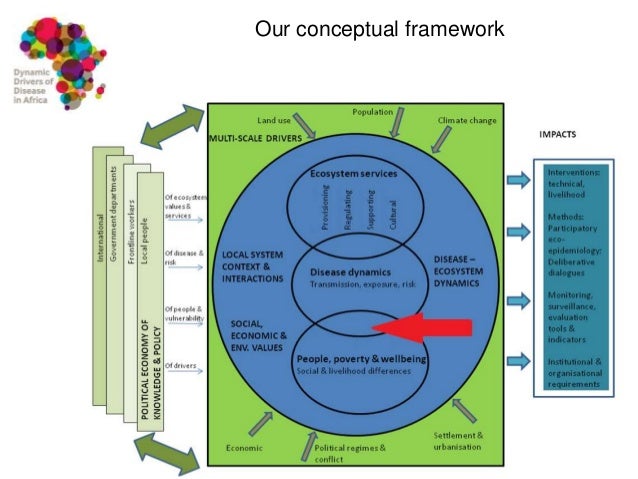Drivers Of Land Use Change Presentation

DRIVERS OF LANDCOVER AND LANDUSE CHANGE IN KENYA 1983 – 2013 Mike Norton – Griffiths, Dphil., Snr. Research Fellow, ICRAF. Harvey Herr, GIS Consultant, ICRAF. Agricultural Intensity 1983. 3. Agricultural Intensity 2013. 4.
Download Presentation PowerPoint Slideshow about 'Climate and Economic Drivers of Land Use Change' - heidi Download Now An Image/Link below is provided (as is) to. A Comparison of Land Use and Land Cover Change Detection Methods - PowerPoint PPT Presentation.
Agricultural Intensity 1983 2013. 5. Increase in Agricultural Intensity 1983 2012.
6. Agricultural Intensity 1983 v. Impact of Land Tenure on Agriculture.
8. The development trajectory of unadjudicated is 40 years behind that of adjudicated land. 9. Agriculture replaces the Natural Vegetation. 10. But at the expense of Herbaceous rather than Tree cover.
11. Total Tree Cover 1983 2013. 12. Managed trees (aka trees-on-farms aka agro- forestry) replace natural trees. 13. Increase in Agroforestry 1983 2013 of 215,000 hectares Woody Crops Ha 29,000 Hedgerows and Windrows Ha 62,000 KmKm 207,000207,000 Woodlots Ha 48,000 Plantations Ha 16,000 Scattered Trees Ha 60,000. 14.
Impact of Tenure on Tree Cover. 15. Impact of Tenure on Tree Cover Adjudicated Land. 16. Impact of Tenure on Tree Cover Unadjudicated Land. 17.
Impact of Land Tenure on Tree Cover Investment in agro-forestry components Leasehold Freehold Unadjudicated% Trees managed 83% 88% 56%% TOF cash 83% 53% 29%% TOF landscape 17% 47% 71% 'Cash' Woody crops, woodlots & plantations 'Landscape' Hedgerows, windrows and scattered trees. 18.
Are Forests doing a good job? Are Forests doing a good job? Mount Elgon. 20.
Are Forests doing a good job? Mau Forest. 21.
Agriculture in the Mau Forest Reserve 2013. 22. Population Growth and Agricultural Expansion. 23. Agricultural Intensity within Agro-Ecological Zones. 24. Change in Agricultural Intensity within Agro-Ecological Zones.
25. Change in Agricultural Landcover with Rainfall.
26. Change in Agricultural Landcover with Temperature. Embed Presentation on drivers of landcover and landuse change in Kenya. DRIVERS OF LANDCOVER AND LANDUSE CHANGE IN KENYA 1983 – 2013 Mike Norton – Griffiths, Dphil., Snr. Research Fellow, ICRAF. Harvey Herr, GIS Consultant, ICRAF. Agricultural Intensity 1983.
3. Agricultural Intensity 2013.
4. Agricultural Intensity 1983 2013. 5. Increase in Agricultural Intensity 1983 2012. 6. Agricultural Intensity 1983 v.
Impact of Land Tenure on Agriculture. 8. The development trajectory of unadjudicated is 40 years behind that of adjudicated land.
9. Agriculture replaces the Natural Vegetation. 10. But at the expense of Herbaceous rather than Tree cover. 11. Total Tree Cover 1983 2013.
12. Managed trees (aka trees-on-farms aka agro- forestry) replace natural trees.
13. Increase in Agroforestry 1983 2013 of 215,000 hectares Woody Crops Ha 29,000 Hedgerows and Windrows Ha 62,000 KmKm 207,000207,000 Woodlots Ha 48,000 Plantations Ha 16,000 Scattered Trees Ha 60,000. 14. Impact of Tenure on Tree Cover.
15. Impact of Tenure on Tree Cover Adjudicated Land. 16.
Impact of Tenure on Tree Cover Unadjudicated Land. 17. Impact of Land Tenure on Tree Cover Investment in agro-forestry components Leasehold Freehold Unadjudicated% Trees managed 83% 88% 56%% TOF cash 83% 53% 29%% TOF landscape 17% 47% 71% 'Cash' Woody crops, woodlots & plantations 'Landscape' Hedgerows, windrows and scattered trees. 18. Are Forests doing a good job?
Are Forests doing a good job? Mount Elgon. 20. Are Forests doing a good job? Mau Forest. 21. Agriculture in the Mau Forest Reserve 2013.
22. Population Growth and Agricultural Expansion. 23. Agricultural Intensity within Agro-Ecological Zones. 24. Change in Agricultural Intensity within Agro-Ecological Zones. 25.
Change in Agricultural Landcover with Rainfall. 26. Change in Agricultural Landcover with Temperature.
Download Presentation PowerPoint Slideshow about 'Climate and Economic Drivers of Land Use Change' - heidi An Image/Link below is provided (as is) to download presentation Download Policy: Content on the Website is provided to you AS IS for your information and personal use and may not be sold / licensed / shared on other websites without getting consent from its author.While downloading, if for some reason you are not able to download a presentation, the publisher may have deleted the file from their server. Drivers. Population and Income Growth—greater demand, changing consumption patterns—more meat, more land. Agricultural productivity growth—more food on less land. Price driven intensification of production—pasture to feedlots, dry-land to irrigated, more fertilizer, low value to high value.
Climate: Wetter in dry climates, drier in wet climates, or vice versa, warmer in cold climates, warmer in hot climates. Atmospheric composition: CO2 and crop increase but also weeds; ozone—damage; nitrogen deposition.
Energy and Climate Policy: higher energy prices, higher fertilizer and energy costs for agriculture, costs of reducing methane from rice and livestock, nitrous oxide from use of fertilizers. Land policy: Carbon sequestration/reforestation, forest protection. GHG and Other Pollutants from energy and agriculture/land use Land use shares for crops, livestock, bioenergy, forestry Coupled Ocean, Atmosphere Crop, pasture, bioenergy, forest productivity CH4, N2O, Net CO2 from land use Biogeophysical Land Processes Spatial data (0.5º x 0.5º) for land use Temperature, Precipitation, Solar Radiation CO2, Tropospheric Ozone, Nitrogen deposition MIT EPPA, 16 Region, multi Sector CGE model Downscaling Technique/ Spatial disaggregation algorithm DYNAMIC TERRESTRIAL ECOSYSTEMS MODEL (TEM).
This is a complex system with many interactions. Climate policy affects climate/atmospheric composition. Which affects crop/forest/pasture productivity. And, energy and fertilizer inputs. And, costs of controlling methane and nitrous oxide.
It also affects incomes and food prices. And these determine both the amount of land used and where crops are grown. Biofuels and land carbon sequestration are still another element. Understanding these linkages is critical to designing policies that don’t have unpleasant surprises. Data and models well calibrated to data are needed.
Definition Of Land Use Change
Models must represent physical processes and economic/social. response that will occur through markets and policy.